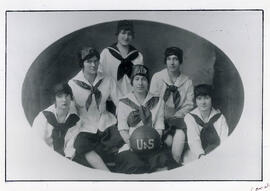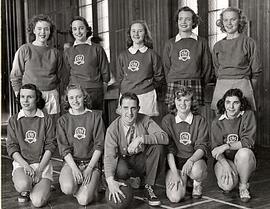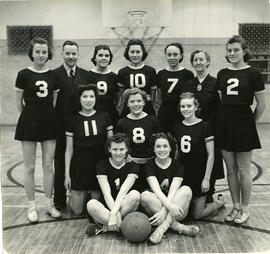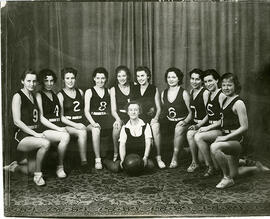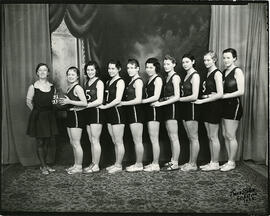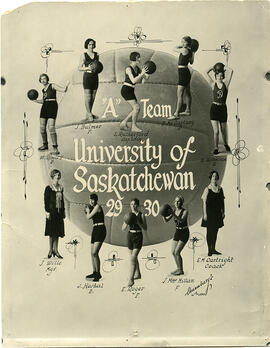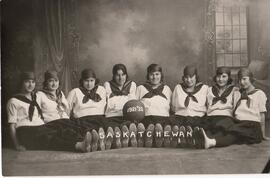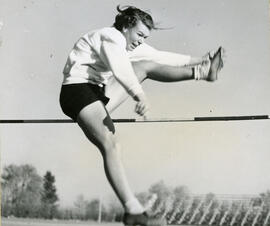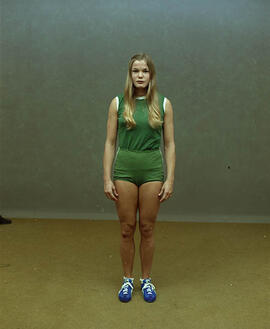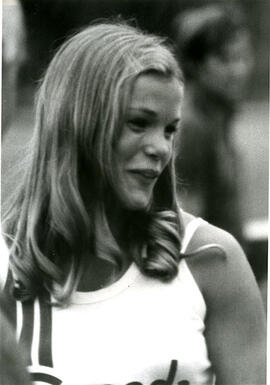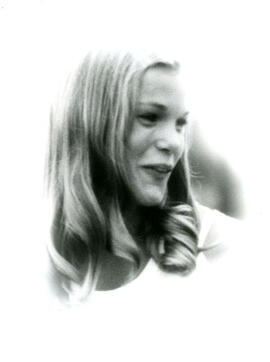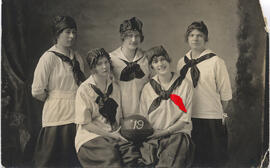University of Saskatchewan Women's Basketball Team - Group Photo
- A-10976
- Stuk
- 1919
Oval-shaped posed indoor image of six team members in uniform and caps. Players (back row, l to r): Rhoda Scholar Russell (Robertson), BA '19; Nellie Ann Railton (Partridge), BA '20. Front row: Beulah Bridgeman (Hay), BSc '19; Edith Maud Hartt (Stephenson), BA '20; and Christine Sinton, BA '20.
Bio/Historical Note: Green and white were established as the official colours of U of S sports teams in 1909-1910 by Reginald Bateman, a native of Ireland and the first English professor at the University of Saskatchewan. But the Huskies name did not appear at that time. Teams were generally referred to as “varsity” or “the green and white” when they played or appeared in media. The name Huskies was included in an article in the 20 September 1932 Star-Phoenix: “The Varsity Stadium yesterday morning saw the advance guard of over twenty gridiron Huskies swing into action.” The origin of the Huskie name is unclear. One of the earliest images of players wearing sweaters with ‘Huskies’ on across the front was in the 1932-1933 Greystone yearbook, showing the men’s hockey team in uniforms with the new name. By 1937 women’s teams were generally referred to as Huskiettes.

